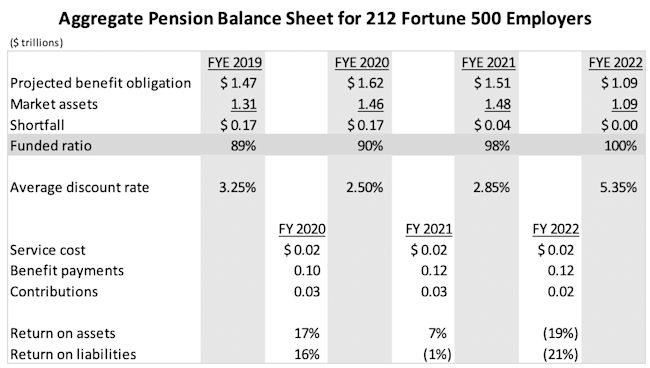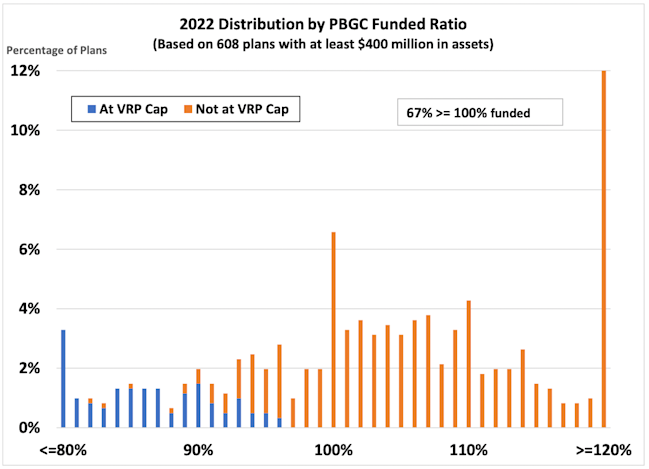Management of DB finance 2023 – a framework
In our last article we discussed the financial “basics” of the de-risking decision in 2023 – the cost vs. benefit of paying out a participant’s benefit this year as a lump sum. In this article we discuss de-risking/settlement in the broader context of DB finance, considering why 2023 might be a good year for settlement (either via a lump sum window or annuitization/pension risk transfer), the relative utility of settlement vs. an ongoing LDI strategy, and the relative utility (in 2023) of a lump sum window vs. annuitization/risk transfer.
Management of DB finance 2023 – a framework
In our last article we discussed the financial “basics” of the de-risking decision in 2023 – the cost vs. benefit of paying out a participant’s benefit this year as a lump sum.
In this article we discuss de-risking/settlement in the broader context of DB finance, considering why 2023 might be a good year for settlement (either via a lump sum window or annuitization/pension risk transfer), the relative utility of settlement vs. an ongoing LDI (liability driven investment) strategy, and the relative utility (in 2023) of a lump sum window vs. annuitization/risk transfer.
A framework for DB finance – the view from 20,000 feet
DB plan sponsors pursuing a return-seeking investment strategy leave two risks on the table: asset performance and liability performance. In any given year, the performance of asset markets, e.g., increases/decreases in stock values, produces positive/negative asset performance. And increases/decreases in interest rates produces positive/negative liability performance (where “positive” liability performance = lower liabilities).
Sponsors pursuing an LDI strategy seek to correlate these two risks, effectively de-risking their net asset/liability portfolio.
But a critical feature of capital market performance writ large (that is, the performance of both assets and interest rates) is a degree of implicit correlation. To a significant extent, the value of an asset (e.g., the value of stock in a company) is determined by discounting (at current interest rates) the future income (company earnings) it is expected to produce. As a result, all other things being equal, a decrease in interest rates will produce an increase in asset values (even with a non-LDI strategy).
Thus, in a year in which “all other things remain equal” and only interest rates change, return seeking and LDI asset/liability portfolios should (very generally and ignoring nuances of duration effects) perform more or less similarly.
The interesting years – for sponsors of DB plans with return seeking portfolios – are those in which all things don’t remain equal, where the performance of interest rates and assets don’t correlate: Situation 1: a year in which interest rates go down and asset values go down (or don’t go up “as much”). Situation 2: a year in which interest rates go up and asset values don’t go down (or don’t go down “as much”).
Situation 1, in which interest rates go down, resulting in negative liability performance (again, where negative means liabilities go up), that is not offset by asset performance, would be a bad year for sponsors using a return seeking DB plan finance strategy. The most recent substantially “bad” year for pension finance in this sense was 2011, when interest rates fell by almost 1%, pushing liabilities up 10% or more, while stock markets were mostly flat.
Situation 2, in which interest rates go up, resulting in positive liability performance (again, where positive means liabilities go down), that is not offset by negative asset performance, would be a good year for sponsors using a return seeking DB plan finance strategy. 2021 was that kind of year – a return seeking DB sponsor’s sweet spot year.
2021 as a sweet spot year
Very broadly, the story of (return seeking) DB finance for the last three years goes something like this: in 2020, declines in interest rates were more or less offset by increases in asset values; in 2022, increases in interest rates were slightly more than offset by (smaller) declines in asset values. But in 2021, sponsors saw interest rates increase combined with double-digit stock market increases.
The table below summarizes the performance of the DB plans of 212 companies of the Fortune 500 – the top half of the US corporate pension universe.

The good news here is that the gains from the 2021 “sweet spot” year ($130 billion) have, in 2022 (and, indeed, through April 2023) in effect consolidated – there has been no give-back of the net funding gains.
This is the first DB finance 2023 takeaway – to put it crudely, the glide path has landed. And, in this situation, many sponsors will at least want to consider “moving DB plan liabilities off the books.”
Many sponsors see a greater risk of downside interest rate movement
With the obvious caveat that no one can predict with confidence which way interest rates will (at least in the short run) move, it is fair to say that — with inflation seeming to (at least for the moment) plateau, and with what some see as long-run downward pressure on interest rates, many sponsors see a greater risk of lower, rather than higher, interest rates ahead.
To state the obvious, with that view in mind, many sponsors will want to consider hedging against that risk.
Broadly, there are two basic types of DB finance interest rate hedging strategies – liability driven investment (LDI) (in which plan assets are invested in duration-matched fixed income securities); and settlement via either payment of a lump sum or distribution of an annuity (AKA pension risk transfer).
LDI vs. settlement
For sponsors who have made a decision to hedge DB liabilities, LDI has one principal advantage over settlement: it’s not permanent. The sponsor can (more or less) stabilize DB related balance sheet volatility, while preserving its ability to change its mind in the future and, e.g., resume a return seeking strategy (e.g., when, in its view, the risk of an increase in interest rates increases significantly).
Settlement, on the other hand, has two advantages over LDI:
Precision – LDI will never perfectly match plan liabilities, and to the extent that the match is imperfect, some DB balance sheet volatility will remain on the books. Settlement (via either a lump sum or an annuity), on the other hand, will remove the settled liabilities forever, at the specific cost of settlement (the cost of the annuity/lump sum).
Reduced overhead – if DB liabilities are left on the books, the sponsor will have to continue to pay annual Pension Benefit Guaranty Corporation premiums ($96 per participant in 2023) and administrative expenses (typically around $50 per participant per year). Axiomatically, these substantial per capita costs mean that sponsors enjoy the greatest return for settling the smallest benefits.
Lump sum vs. annuity
Settling retired lives via a group annuity purchase from an insurer is the simplest settlement strategy for plan sponsors. In recent years, a robust market with reduced pricing uncertainty (generally, 99%-103% of the balance sheet liability) has developed; at the same time, several new insurers have entered the market.
For plans that have yet to do so, 2023 represents an excellent opportunity to transfer smaller retiree benefits to an insurer, shedding risk and overhead cost in the wake of pension finance tailwinds.
For non-retired lives, insurer group annuity pricing is typically 125% of the balance sheet liability or higher. For this group, the “go to” settlement strategy is a lump sum window, which can be offered to deferred vested participants and active participants beyond age 59-1/2.
Lump sum windows are more labor intensive than annuity purchases, requiring a plan amendment and the preparation and processing of participant election forms. On the other hand, benefit liabilities for this group are often much lower than for retirees, and lump sum settlements, apart from the “lookback and stability period” issue that we wrote about in March, track employer balance sheet liabilities closely.
At the end of April, interest rates are about 0.75% lower than the highs seen last October. At these rates, plans using a 2022 lookback month for 2023 lump sums may be able to pay out lump sums at a discount to their balance sheet liability.
Plans left behind

As the chart above indicates, while two-thirds (409 out of 608) of large US DB plans are fully funded, there are still a lot of plans (199) that are not. For sponsors of the latter, typically, the primary finance challenges will be managing PBGC variable rate premium costs (subject to a headcount cap, 5.2% unfunded vested benefits annually) and (for some at least) ERISA minimum funding requirements.
More than half (108) of the underfunded plans above have premiums limited by the variable premium headcount cap. For this group, the per participant overhead savings associated with settling liabilities jumps (in 2023) from $96 to $748, massively increasing the scope for economically-sensible settlement of pension liabilities.
For these plans, we discuss strategies for reducing PBGC VRPs in our article Reducing PBGC premiums in 2023 – the significance of the standard/alternative method election.
* * *
We will continue to follow these issues.
